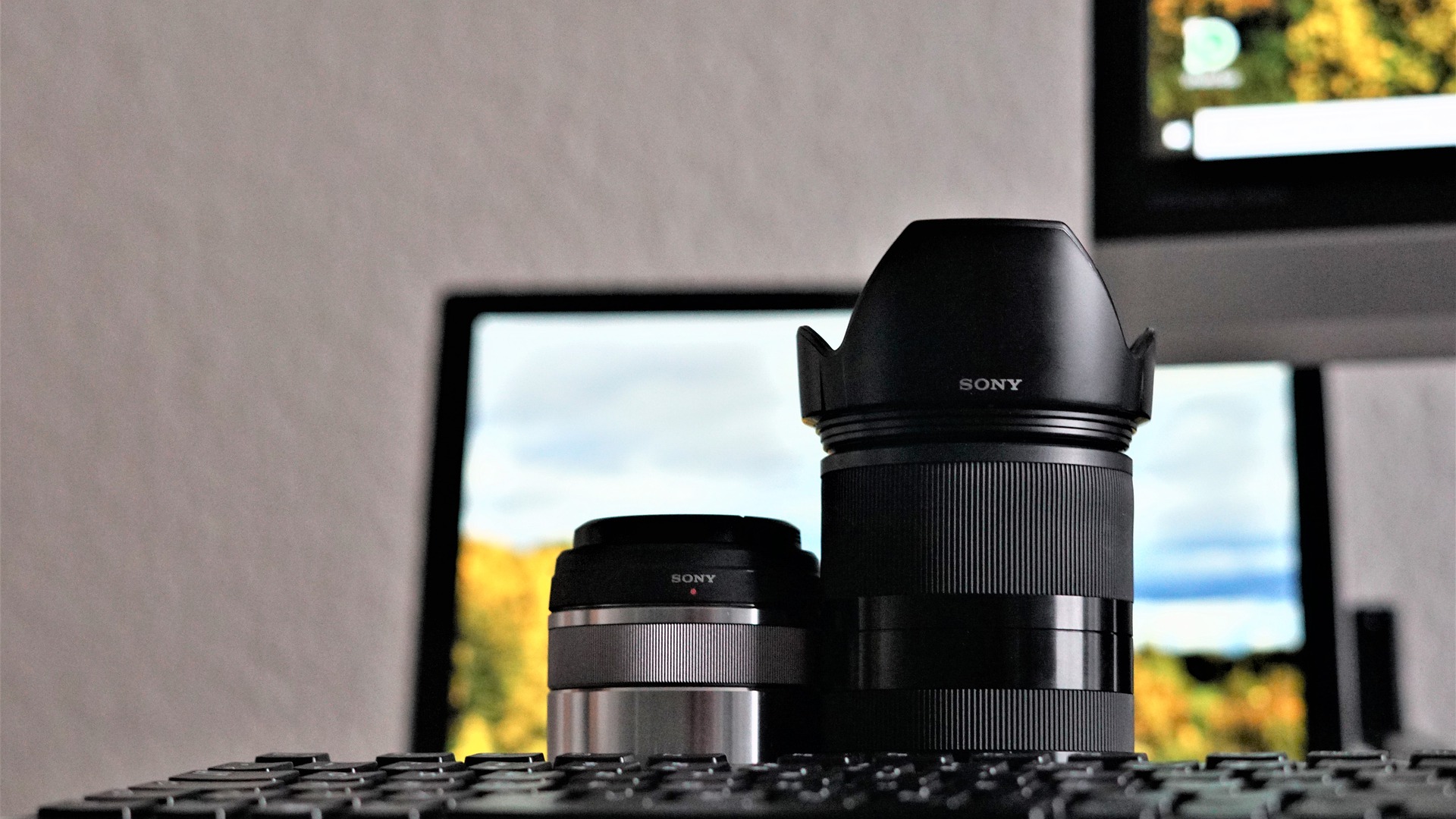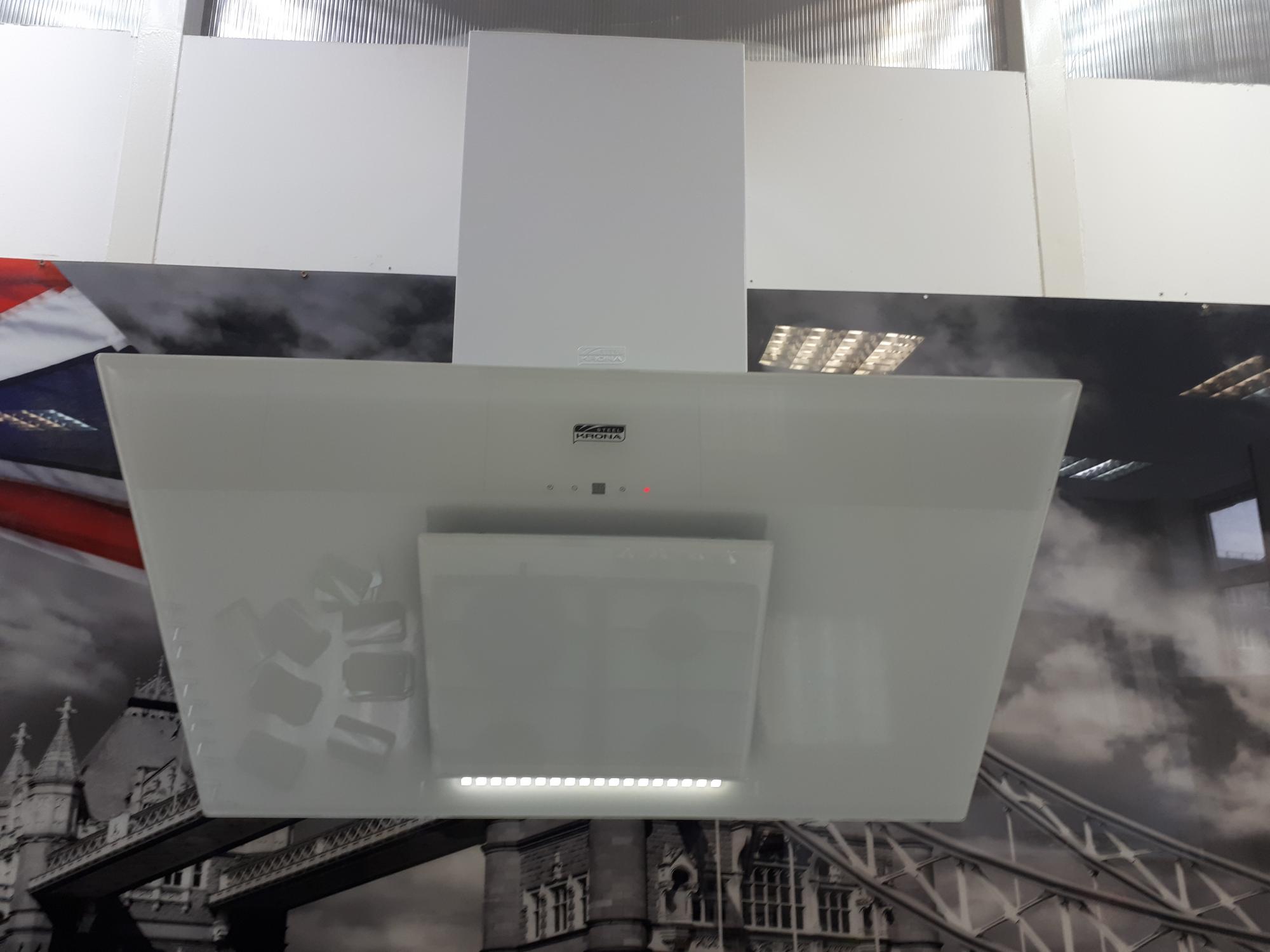Xiaomi Mi True Wireless Earbuds – Advantages and Disadvantages

Last fall, Xiaomi Corporation decided to slightly supplant Apple in the wireless headphone segment and announced the release of the exclusive Xiaomi Air Dots TWS headset. Despite the very high-quality sound, this headset had a number of disadvantages, the key of which was directly the features of their functioning.
The company made competent conclusions about this and presented a new version of the device to the market, which it called Xiaomi Mi True Wireless.
Content [Hide]
Specifications

Appearance and comfort
In a compact box, the user is welcomed with headphones with a charging case, a set of spare ear pads and a practical USB Type-C charging cord. The first thing to highlight is the dimensions of the model.The case has an angular form factor, which makes it possible to comfortably place it on a different plane, but this does not make it convenient to put it in a pocket of light clothing. If we compare the case of this device with the exemplary comfort case of Apple Air Pods, then the dimensions of Mi True Wireless are almost 2 times larger than it.
The lid of the case is attached with magnets, but if the user puts it in the pocket with the lid to the bottom, then it can swing open when it is taken out.
The quality of materials and workmanship is top notch. The case is made of durable matte plastic materials. There is an LED charging indicator on the front. On the right is a button that allows you to put the gadget into synchronization mode and reset it to factory settings. The USB Type-C port for charging the device is located at the bottom. So for some reason, the Chinese corporation made the case so dimensional? It would be reasonable to think that the company sacrificed appearance and ergonomics in favor of functionality by placing, for example, a powerful battery and a wireless charging coil in the inside of the case, but alas, this is not the case. There is no wireless charging here, and the power of the integrated battery is 410 mAh.
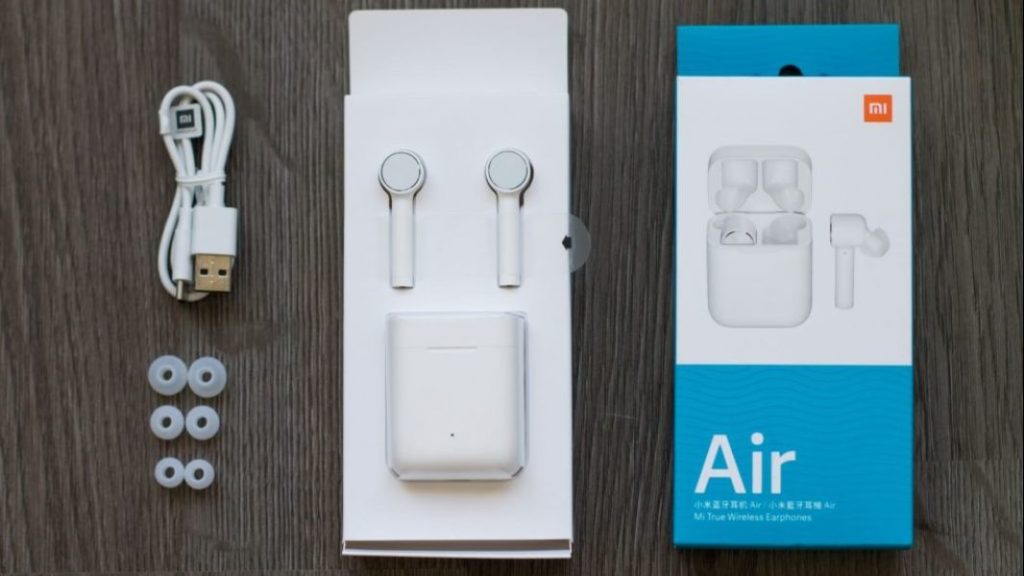
After the case, it would be advisable to talk about the appearance of the headphones themselves. This is a vacuum-type headset that is similar in appearance to Air Pods from Apple Corporation. Each earphone is equipped with a touch-type panel, a charge indicator light, two microphones and a proximity sensor.
There are no complaints about the materials and reliability of the assembly. The model is made of the same matte plastic materials as the case. There is protection against moisture that meets the IPX4 standard.In other words, Mi True Wireless is not afraid of light rain or sweat, but it is strictly forbidden to take a shower or take a gadget with you to the pool. Touch-type panels look very attractive, they serve as a key component of the model's appearance. The headphones are significantly larger when compared with the same Air Pods from Apple, in particular, this applies to the “sticks” of the device.
And if the "apple" developers installed batteries in the "sticks" of their device, then there is nothing in Mi True Wireless, except for the microphone and the board. All key components (speaker, battery, sensors) are inside the gadget itself. Mi True Wireless are attached to the case by means of magnets, and if they fit there with incredible ease, then getting them out of there is very uncomfortable - there is literally nothing to take on - Mi True Wireless slip away from your fingers.
The gadget comes with 4 pairs of spare ear pads. If the user has a desire to change the “native” ear pads to their own, then it is worth remembering their diameter inside, which is 4 mm. The meshes that protect the sound guide of the device are not made of metallic materials, which means that they can wear out after some time. In general, the design and quality of the new model is significantly better when compared with its predecessor.
The only problem with the appearance is the dimensions of the case, and directly in the headphones.
Sound quality
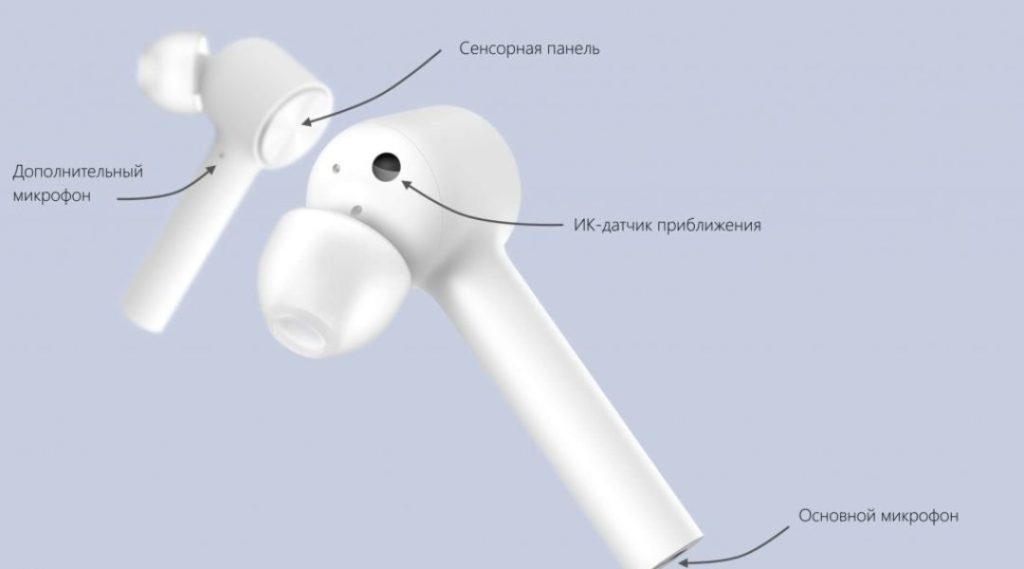
It is almost unrealistic to talk about the sound quality impartially, since the perception of sound lies in the physical qualities of any person, and when it comes to the sound of vacuum-type headphones, the task becomes as complicated as possible, since in such a situation both comfortable placement in the auricle and properly selected ear pads are very significant .In reviews, and indeed on the Internet, there are completely opposite comments regarding the sound quality of the device. In this regard, it is necessary to study this issue in as much detail as possible.
Low frequencies (LF) are present in Mi True Wireless, and there are more than enough of them. For some reason, then, some users say in the reviews that there is no bass? It is in this matter that the placement of the gadget in the auricle and the ear pads decide, as they say, everything.
If the ear pads do not sit well in the ears and do not properly isolate the ear canal, then problems with low frequencies are provided. While checking various ear pads (not just factory ones), one remarkable side of Mi True Wireless was discovered. Maybe this is due to their form factor or the length of the sound guide, but from time to time there was a feeling that the device fits superficially in the ear canal. This greatly affected the quality and volume of the bass. The problem was radically solved by properly selected ear pads, for example, one size larger.
For this reason, there is no need to rush to a conclusion until the user is convinced that he did everything correctly. In particular, this problem is found among the majority of YouTubers doing unpacking on camera and talking about the first sensations. For some people, Mi True Wireless will fit right out of the box, while others need to choose ear pads and make sure they fit correctly. In general, the sound is pretty smooth.
Detailing mids and highs is good. In terms of sound, they are very similar to Air Pods from Apple, I especially want to highlight the presence of a “scene”. The sound is quite rich and there is no “inside the head” effect. Checked Mi True Wireless in synchronization with the Xperia 1 phone from Sony.The volume level is excellent, physiological discomfort begins to make itself felt already at 80% volume. In addition, it is worth highlighting the support for the AAC codec, however, on specific phone models, the headphones function exclusively via SBC and it is not possible to install another codec.
Active and passive noise suppression system
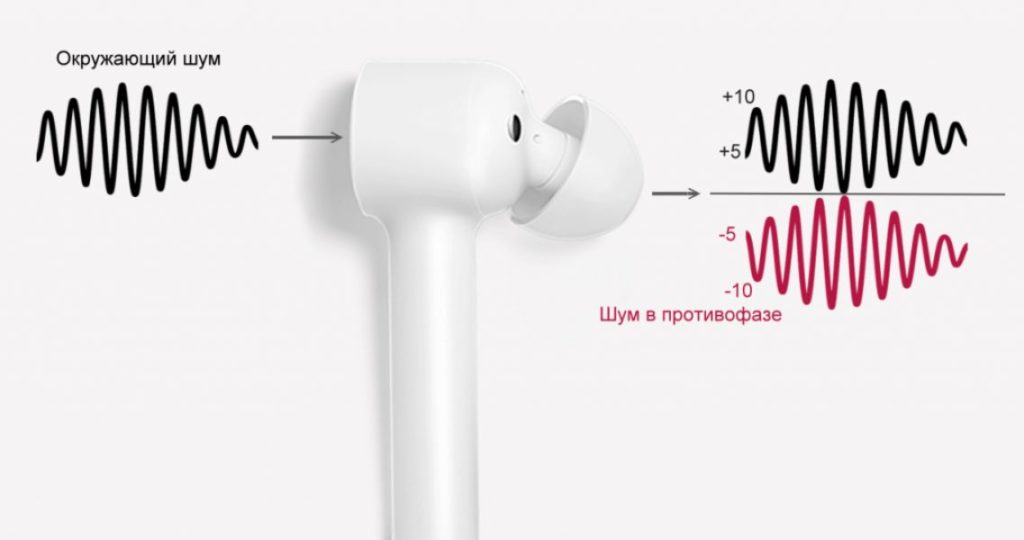
Headphones, as mentioned above, are vacuum, which means that they have a passive noise suppression system. The ear pads isolate the ear canal, thereby forming a vacuum effect. Soundproofing quality is average. If you listen to the tracks not quite loudly, then it is possible to hear extraneous sounds. If you increase the volume to about 70% or more, then extraneous noise will be almost completely isolated.
In addition to passive noise cancellation, this model has active noise cancellation. If you hold down the touch-type panel of one of the headphones for three seconds, ANC (Active Noise Cancellation) will turn on. Microphones that are integrated into the device catch extraneous noise, after which the speakers broadcast this signal in antiphase. In other words, a “mirror wave” is formed that suppresses extraneous noise.
If the user has ever heard how this technology functions in full-size headphones from Sony or Bose, then the model in question will upset him very much. There is nothing similar here. When the active noise cancellation system is activated, all extraneous noise seems to lose low frequencies. For example, the rumble of a truck engine is not so strong, but more like a buzz. In addition, the focus of the sound is slightly lost.
If noise reduction is turned off, the user will be able to locate the source of the noise with increased accuracy, but once active noise reduction is activated, this feeling becomes "blurred" - it can be difficult to understand where the noise is coming from.
In general, the function is there, and it works, but it is absolutely not as good when compared with full-size headphones from leading manufacturers. If you disable this feature, then the average user will hardly feel a significant difference. In other words, rushing to the store for these headphones solely because they have active noise cancellation clearly does not make sense.
Functionality
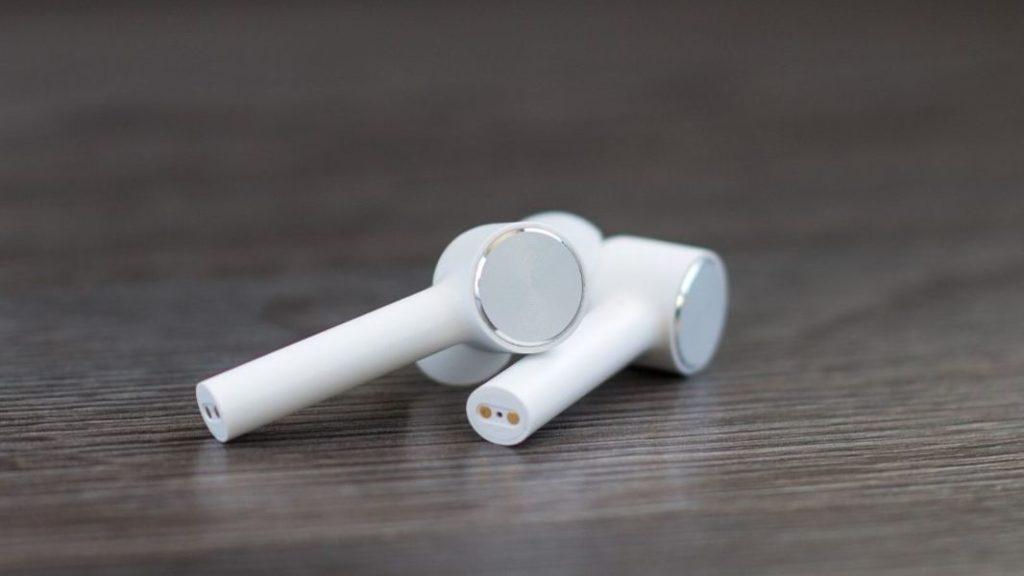
All control over the music is carried out through touch-type panels. It should be noted that it is the sensors that are used here, and not the accelerograph, as in other headphones, which essentially respond to tapping. The following functions are supported:
- Double-tap on any of the headphones - answer the call;
- Double tap on the right earbud - play/stop;
- Double tap on the left earpiece - call the voice assistant;
- Touching any of the headphones and holding for a few seconds activates/deactivates the Active Noise Cancellation system.
Alas, it is not possible to adjust the volume level or scroll through songs through the device. Alternatively, you can use a voice assistant for this purpose. In other words, double-tap the left earbud and say "next track". In addition, each earpiece is equipped with an infrared sensor. The track automatically stops playing when you remove the earpiece from your ear.As for the action distance, the manufacturer claims that it is 10 m.
It is possible to put a smartphone in one room and the gadget will continue to work without problems even through a wall. There is no official program for the model in question on the phone. Therefore, it is not possible to update the firmware or adjust the gestures on your own initiative. There is also a “modest” limit in the process of using only one earpiece.
If you use the right earpiece exclusively, then by double-tapping it is possible to pause tracks, and calling the voice assistant is not available at the same time. It would be reasonable to think that, using the left earpiece exclusively, a double-tap will bring up the voice assistant, and the “stop/start playback” function will be limited, but this is not the case.
The left earpiece will also stop playback, and you can’t call the voice assistant at all.
Headset
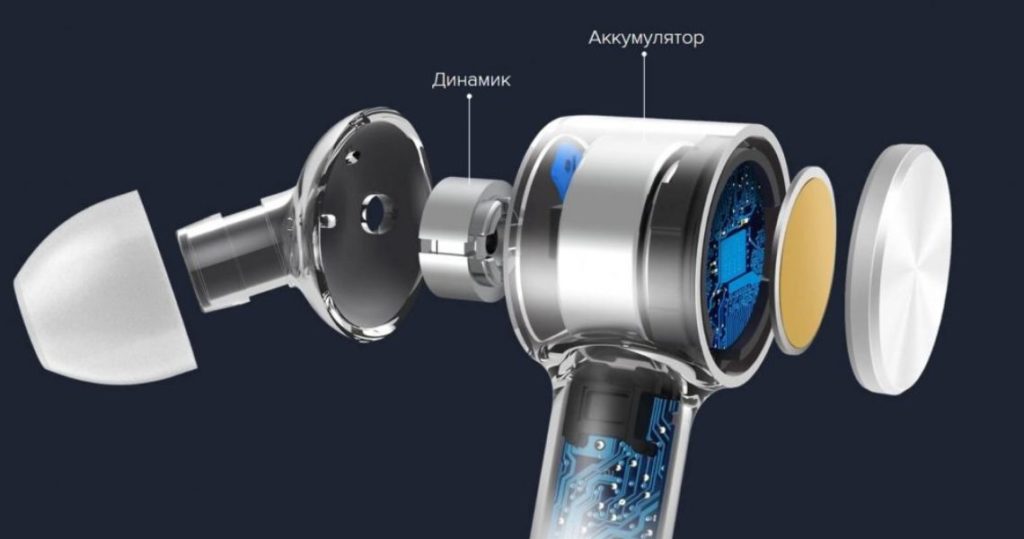
Of course, Xiaomi headphones can also be used as a headset. Each earpiece is equipped with two microphones - main and auxiliary in order to isolate noise, however, it is impossible to single out any exceptional voice quality.
In addition, the interlocutor often notices the background and slight interference in the voice. The quality of communication through a smartphone is noticeably higher when compared with headphones. On the other hand, the user will hear the interlocutor perfectly. As in all other gadgets of this type, it is possible to use one earpiece (the one that the user took out of the case first and will function as a headset).
Simultaneous synchronization with two devices
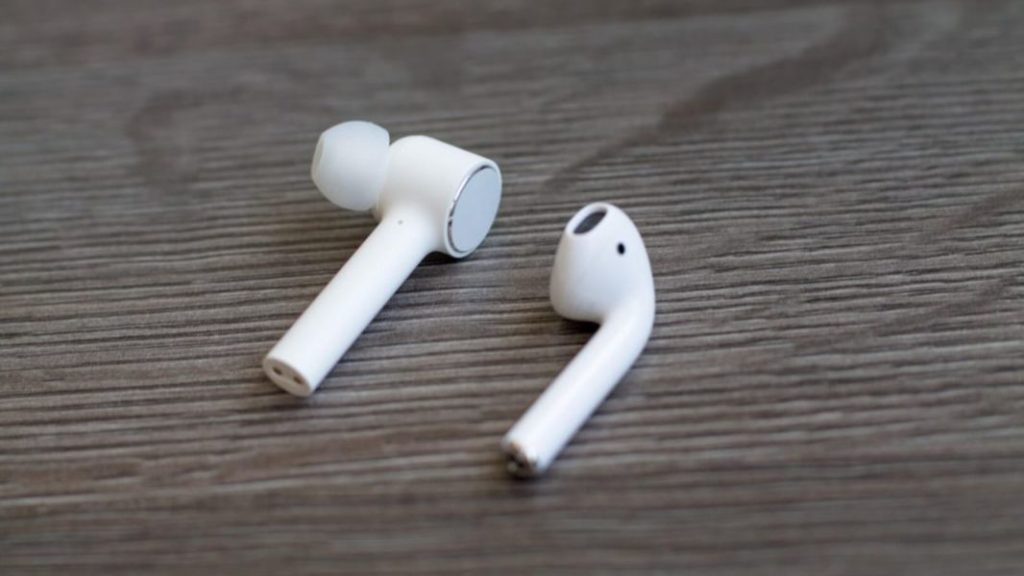
The headphones also have the exclusive ability to synchronize each earbud with your phone. To do this, you need to put only one earpiece in the case, hold the end button of the case for a couple of seconds and connect this earpiece to the first phone.
After that, you should remove this earpiece from the case and put the second one in there, hold the button again for a couple of seconds and connect it to another phone. After that, they can be used synchronously with two devices. If the headphones do not connect or function incorrectly, it is possible to perform a factory reset. For this purpose, you need to put them in a case and hold the end button for 10-15 seconds.
Sound out of sync
When watching movies, the sound is slightly separated from the picture. The difference is only some hundredths of a second and, in general, does not cause discomfort during viewing, however, it is unrealistic to enjoy the games, since the delays are too large.
Battery life
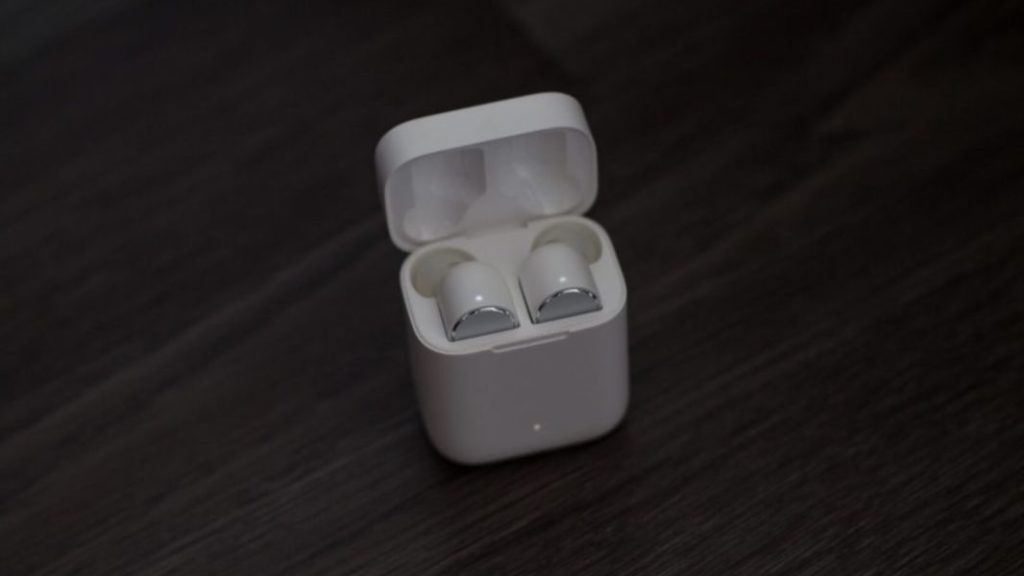
From a 100% charge, the gadget functions for approximately 3 hours at a volume of about 70%. They sit down separately and it often happens that one earphone is already dead, while the other one still continues to work for 10-20 minutes. The battery capacity of the case is enough to recharge the device 3 times, thereby increasing the total amount of time the gadget works up to 10 hours.
The case charge recovery time is 1 hour.
It is not possible to find out a certain level of charge of the case. If you touch the end button, then the indicator on the case either glows constantly for several seconds, or flickers. In the first situation, there is enough charge, in the other - not.
The headphone charge is recognized in the same way.If you open the cover of the case, the indicators on the headphones either glow continuously for 5 seconds, or flicker. If compared with the battery of the case, then the exact level of charge of the headphones can be found using the phone.
How much do they cost and where can you buy?
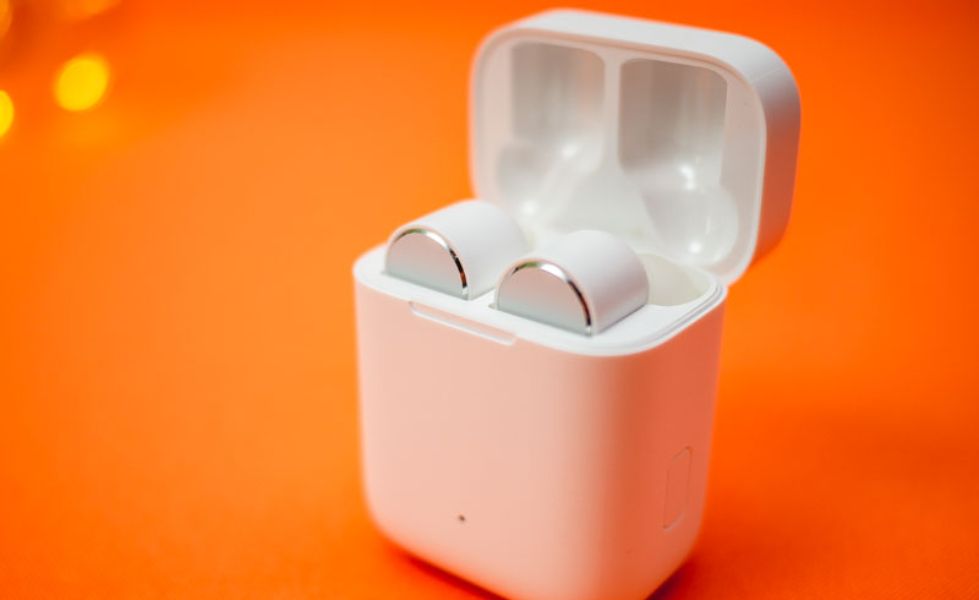
It is possible to purchase Mi True Wireless in Russia and in online stores in China (for example, on AliExpress). Users give more preference to the latter, since the cost there is much more affordable when compared with Russian retail.
The cost of the model changes all the time and ranges from 3,950 to 4,900 rubles from various sellers.
- High-quality sound;
- Active noise suppression system;
- Moisture protection.
- Overall;
- Overall case;
- Not the best battery life.
In conclusion, it should be noted that the model under consideration has only one significant drawback, which is its size. They are significantly larger than identical products from Samsung, Honor, Huawei, Xiaomi and Apple.
The bottom line is that such large dimensions are not associated with one or another auxiliary functionality. The Chinese corporation either failed or did not want to implement a practical body that could stand out from its rivals.
If the size is not important to the user, and he knows what vacuum-type headphones are, then this model will be a good purchase at this price. A close rival of this model are Freebuds Lite from Huawei.
new entries
Categories
Useful
Popular Articles
-

Top ranking of the best and cheapest scooters up to 50cc in 2025
Views: 131649 -

Rating of the best soundproofing materials for an apartment in 2025
Views: 127688 -

Rating of cheap analogues of expensive medicines for flu and colds for 2025
Views: 124517 -

The best men's sneakers in 2025
Views: 124031 -

The Best Complex Vitamins in 2025
Views: 121938 -

Top ranking of the best smartwatches 2025 - price-quality ratio
Views: 114978 -

The best paint for gray hair - top rating 2025
Views: 113393 -

Ranking of the best wood paints for interior work in 2025
Views: 110318 -

Rating of the best spinning reels in 2025
Views: 105327 -

Ranking of the best sex dolls for men for 2025
Views: 104363 -

Ranking of the best action cameras from China in 2025
Views: 102214 -

The most effective calcium preparations for adults and children in 2025
Views: 102010
